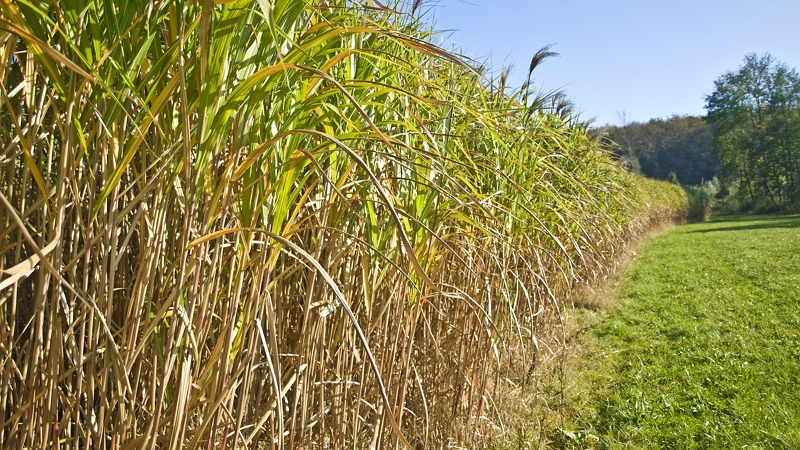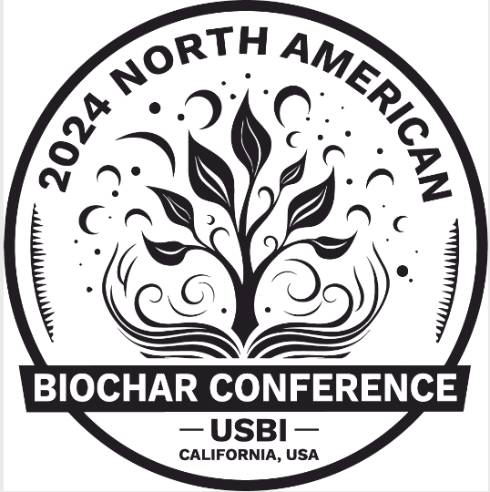Analysis Package P10 : Sugars, Lignin, Extractives, and Ash
We have found that if the extractives are not removed they will cross-react with the acid during our hydrolysis process and can condense to acid-insoluble components that will be associated-with and classified-as Klason lignin (KL). We have also found elevated acid soluble lignin contents in samples that have been hydrolysed with no prior extraction. Similarly, many biomass samples can contain water soluble carbohydrates in the extractives and, if these are not removed prior to hydrolysis, will be part of the hydrolysate and could be incorrectly considered to be coming from cellulose or hemicellulose.
Use of this analysis package will avoid those problems.
If you think that your sample may contain starch then we would also recommend that analysis package P14 - Starch Content is undertaken in addition to this work package as, otherwise, starch would be hydrolysed during the acid hydrolysis stage of P10, meaning that a portion of the glucose in the hydrolysate would be from starch and not lignocellulosic.
If you are interested in determining the uronic acids composition of your sample then we would also recommend analysis package P15 - Uronic Acids in addition to P10.
Constituents Determined
Examples of the data reports generated can be viewed on the Celignis Database. Please log on to the guest account using email "test@celignis.com" and password "celignis".
Click here to place an order for determining Sugars, Lignin, Extractives, and Ash.
Request a QuoteSugars, Lignin, Extractives, and Ash
Analytical Procedure for Sugars, Lignin, Extractives, and Ash
☑ Step 1: Determination of Ash Content
1. The moisture content of the sample is determined by taking a subsample in a crucible of known weight and drying in an oven overnight at 105 degrees celcius.
2. After the dried sample is weighed it is then placed in a Nabertherm L-240H1SN muffle furnace and the following program used:
(i) Ramp from room temperature to 105C.
(ii) Hold at 105C for 12 minutes.
(iii) Ramp to 250C at 10C/minute.
(iv) Hold at 250C for 30 minutes.
(v) Ramp to 575C at 20C/ minute.
(vi) Hold at 575C for 180 minutes.
(vii) Allow temperature to drop to 105C.
(viii) Hold at 105C until the samples are removed.
3. The ash samples are then weighed and the ash content calculated.
☑ Step 2: Removal of Water-Soluble and Ethanol-Soluble Extractives
1. The moisture content of the sample is determined, in duplicate.
2. Six 11 ml capacity DIONEX ASE (Accelerated Solvent Extraction) cells are filled with recorded weights of the sample.
3. The following DIONEX ASE 200 Method is then used on the first 4 cells:
| Pressure: | 1500 psi |
| Temperature: | 100 celcius |
| Preheat Time: | 0 mins |
| Heat Time: | 5 mins |
| Static Time: | 7 mins |
| Flush Volume: | 150% |
| Purge Time: | 150 s |
| Static Cycles: | 3 |
| Solvent: | Water |
4. The Method listed above is then repeated for cells 3-6 with the only difference being that 95%-Ethanol is used as the solvent.
5. A box, of known weight, is taken and the remaining biomass from the first extraction cell transferred to it. This is repeated for the other cells.
6. After 2 days each box is weighed again and the moisture content of a subsample of the extracted biomass determined (in duplicate).
7. The weight of Water-Soluble Extractives is determined as the mass loss in the biomass sample, due to extraction in the ASE-200 (corrected for moisture), for the first two cells.
8. The weight of 95%-Ethanol-Soluble Extractives is determined as the mass loss in the biomass sample, due to extraction in the ASE-200 (corrected for moisture), for the last two cells.
9. The weight of Exhaustive Extractives is determined as the mass loss in the biomass sample, due to extraction in the ASE-200 (corrected for moisture), for cells 3 and 4.
10. The weight of Water-Insoluble but Ethanol-Soluble Extractives is determined from subtracting the Water-Soluble Extractives content from the Exhaustive Extractives content.
☑ Step 3: Acid Hydrolysis of the Sample
In the case where three different types of extracted material exist (water-extracted, ethanol-extracted, and water- then ethanol-extracted) then the sample that has undergone both water and ethanol extraction is typically used for acid hydrolysis, unless otherwise requested by the customer.
The following steps are involved in the acid hydrolysis of a sample.
1. The moisture content of the sample is determined, in duplicate.
2. Approximately 300 mg (with the exact weight noted) of the sample is added to a pressure tube.
3. 3.00 mL of 72% H2SO4 is added by means of an automatic titrator, the weight of the acid added is noted.
4. The sample is mixed thoroughly with the acid using a glass rod, care is taken that no sample stays adherent to the sides of the tube, but instead stays in contact with the acid.
5. The tube is transferred to a water bath that is maintained at 30 degrees celcius.
6. Steps 2-5 are repeated for the duplicate sample.
7. Every 10 minutes the glass rod for each pressure tube is stirred so that the acid reaches all parts of the sample and complete hydrolysis occurs. This is a crucial step.
8. Exactly one hour after it is placed in the water bath the pressure tube is removed and placed on a scales and 84 mL of water added (with the weight of the added water recorded). Any acid/sample on the rod is removed from the rod at this point using this water.
9. A lid is screwed on the tube and the tube is inverted several times to ensure thorough mixing of the acid.
10. Two sugar recovery solution (SRS) pressure tubes are prepared in order to monitor the sugar-loss associated with the second-stage-hydrolysis. This involves the following steps:
(a) 348 microlitres of 72% H2SO4 is added to a test tube containing a solution containing a known weight (approximately 10 g) of a sugar standard. This standard should be of a similar sugar composition to that expected of the samples being analysed. The acid and sugar solution are thoroughly mixed.
(b) The sugar-acid mixture is transferred to a pressure tube which is then sealed.
11. All SRS and sample pressure tubes are placed in an autoclave which is run at 121 degrees celcius for 60 minutes.
12. After the temperature in the autoclave drops to under 80C the tubes are removed and are left (closed) in the lab until they reach room temperature.
13. The hydrolysates are then filtered (using vacuum suction) through filter crucibles of known weight and the resulting filtrate is stored.
14. Any residual solids are washed out from the tube using deionised water until all the Acid Insoluble Residue resides on the filter crucible.
☑ Step 4: Determination of ASL Using UV-Vis Spectroscopy
1. The hydrolysate (filtrate) from the Acid Hydrolysis Stage, is quantitatively transferred using a pipette to a 1 cm path-length (3 mL volume) quartz cuvette.
2. The UV-Visible (190-520nm) transmission spectrum of the sample is then obtained using the HP 8452A diode-array spectrophotometer.
3. If the absorbance at a given wavelength is outside of the linear region (considered to be between 0.7 and 1.0 absorbance units) then the sample is diluted with water until the value falls within this region.
3. This dilution and UV-Visible analysis is carried out twice for each hydrolysate, meaning that each sample will have four spectra collected (two spectra for each of the duplicate hydrolysates).
☑ Step 5: Hydrolysate Dilution and Storage
☑ Step 6: Gravimetric Determination of Klason Lignin
1. The filter crucibles from the Acid Hydrolysis Step are placed in an oven overnight and dried at 105C.
2. These crucibles are then weighed to determine the Acid Insoluble Residue content.
3. The crucibles are then placed in a Nabertherm L-240H1SN muffle furnace and the following program used:
(i) Ramp from room temperature to 105C.
(ii) Hold at 105C for 12 minutes.
(iii) Ramp to 250C at 10C/minute.
(iv) Hold at 250C for 30 minutes.
(v) Ramp to 575C at 20C/ minute.
(vi) Hold at 575C for 180 minutes.
(vii) Allow temperature to drop to 105C.
(viii) Hold at 105C until the samples are removed.
4. The fiter crucibles are then weighed and the Acid Insoluble Residue, and Acid Insoluble Ash content calculated.
5. The Klason Lignin content is then calculated by subtracting the Acid Insoluble Ash content from the Acid Insoluble Residue content.
☑ Step 7: Chromatographic Analysis of the Hydrolysate
Equipment Used for Sugars, Lignin, Extractives, and Ash Analysis
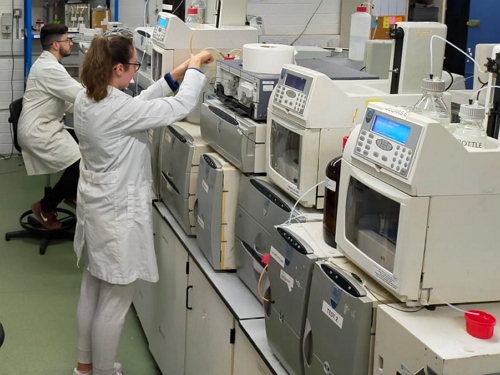
Ion Chromatography
A Dionex ICS-3000 system that is equipmed with electrochemical, conductivity, and ultraviolet-visible detectors.
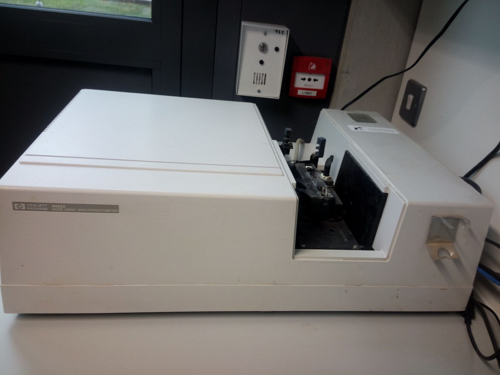
UV-Vis Spectrophotometer
A HP 8452A Ultraviolet-Visible spectroscopy device that is used for the determination of the acid soluble lignin concentration of the acid hydrolysate of samples.
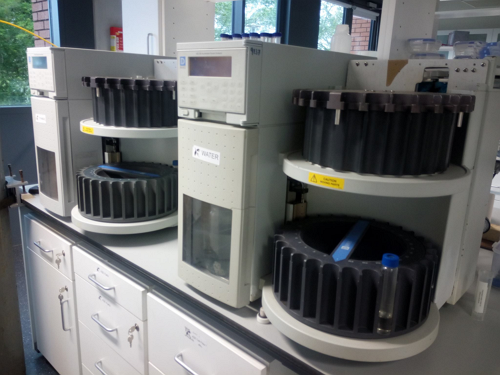
Solvent Extractor
Dionex ASE-200 devices are used to determine the extractives (water-soluble, ethanol-soluble) contents of biomass samples.
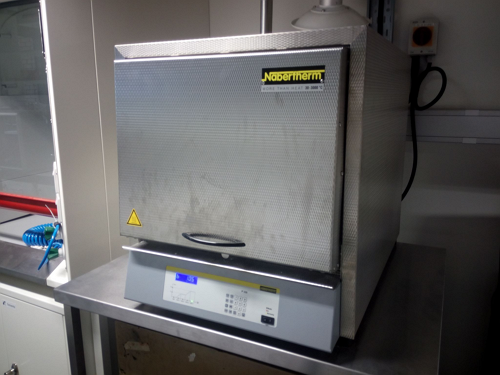
Muffle Furnace
A Nabertherm furnace is used for the determination of the ash content of samples and also in the analytical protocol for determining Klason lignin content.

Autoclave
An autoclave is used in the protocols for the determination of the lignin and structural sugars (cellulosic and hemicellulosic) contents of samples.



